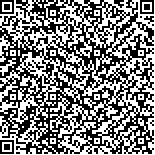| 摘要: |
| [目的]研究气候变暖背景下黄土高原地区干湿区界线动态变化过程。[方法]利用1960—2013年黄土高原地区的76个气象站点逐日平均气温、平均最低气温、平均最高气温、降水、平均风速、日照时数、相对湿度数据,采用Penman Monteith模型计算了黄土高原地区的潜在蒸散量,进而计算干燥度指数。运用线性趋势法、Mann Kendall趋势检验法对黄土高原地区的干燥度趋势进行了分析,运用反距离加权差值(IDW)研究了干燥度界线的动态变化格局。[结果]近54年黄土高原地区干燥度指数呈微弱增加趋势,四季变化中春季呈上升趋势,冬季为减小趋势,夏、秋季变化不明显,空间上兰州以西,银川—太原一线北干燥度指数呈减小趋势; (2)干旱与半干旱区界线在1075°E, 375°N以东表现为经向变化,以西为纬向变化,近54年干旱区范围变化不明显; (3)半干旱与半湿润区界线南北方向波动变化明显, 20世纪90年代向南扩张到华家岭—六盘山—平凉—庆阳—延安—三门峡—长治一线以南,半干旱区面积达到最大,比20世纪60年代的半干旱区范围扩大14%,比2000—2009年大5%左右。[结论]近54年黄土高原总体上地区呈干旱化趋势,半干旱区面积扩大,半干旱与半湿润区界线年代际南北波动频繁,变化范围大,半干旱区是黄土高原地区气候变化的敏感区。 |
| 关键词: 黄土高原地区干燥度指数干湿变化时空格局气候变化 |
| DOI: |
| 分类号:P467; P962 |
| 基金项目:国家自然科学基金“清代同治以来黄土高原马莲河流域荒漠化风险评估与防治研究(31460090); 陇东学院博士基金项目“陇东革命老区在适应气候变化背景下荒漠化防治机制变化及对策研究”(XYBY1708) |
|
| SPATIOTEMPORAL VARIATION OF DRY WET CLIMATE FROM 1961 TO 2013 IN LOESS PLATEAU REGION |
|
Zhang Yaozong1,3※, Zhang Bo2, Liu Yanyan1,3, Zhang Duoyong1,3
|
|
1.College of Geography and History,Longdong University,Qingyang, Gansu 745000,China; 2. College of Geography and Environmental Science, Northwest Normal University, Lanzhou, Gansu 730070, China;3.Qingyang Centre for the Management and Combat of Desertification,Qingyang, Gansu 745000,China
|
| Abstract: |
| This research aims to study the dynamic change process of the boundary between dry and wet area in the Loess Plateau region under the background of climate warming. Based on the daily average temperature, average minimum and maximum temperature, precipitation, wind speed, sunshine hours, relative humidity of 76 meteorological stations in the Loess Plateau region from 1960 to 2013, the ET0 was calculated by using the Penman Monteith model, and then the aridity index was calculated by the ET0 and precipitation. The trend of aridity index in the Loess Plateau was analyzed by using the linear trend method and Mann Kendall trend test. Afterwards, the spatial characters of aridity index was addressed by inverse distance weighted interpolation (IDW). The variation of annual aridity index showed a weak increase trend in recent 54 years, while which presented different trends between seasons as well that the aridity index increased in Spring, decreased in Winter and varied insignificantly in Summer and Autumn. Besides, it showed a decreasing trend in the west of Lanzhou and the north of Yinchuan Taiyuan line. The boundary between arid and semi arid areas showed a longitudinal change trend to the east of 107.5°E,37.5°N, and to the west of which showed a latitudinal varying trend. Overall the variation of arid area range was not obvious in recent 54 years. The diving line of semi arid and semi humid zone showed significant fluctuating variation. In 1990s, it expanded southward and crossed the line of Huajialing Liupanshan Pingliang Qingyang Yan′an Sanmenxia Changzhi, when the area of semi arid zone reached the largest range which was 14% greater than the semi arid area in 1960s and 5% greater than the semi arid area in 2000s. In general, the climate change of Loess Plateau in recent 54 years presented an aridification trend, and the area of semi arid zone expanded. The boundary between semi arid and semi humid region fluctuated frequently from north to south over the decades with a wide range of changes, and semi arid zone was the sensitive area to climate change in the Loess Plateau region. |
| Key words: Loess Plateau region aridity index the diving line of dry/wet land spatiotemporal variation climate change |

